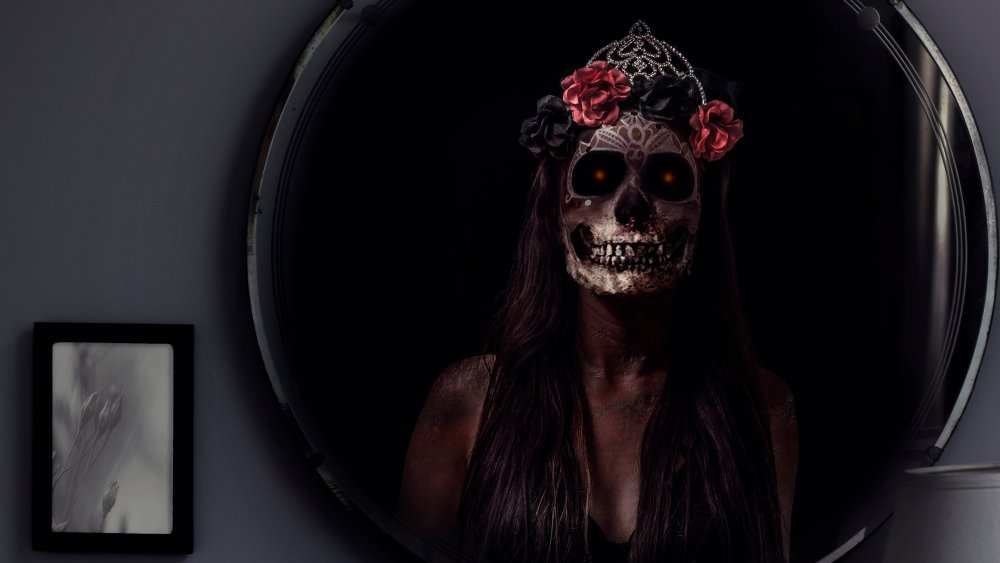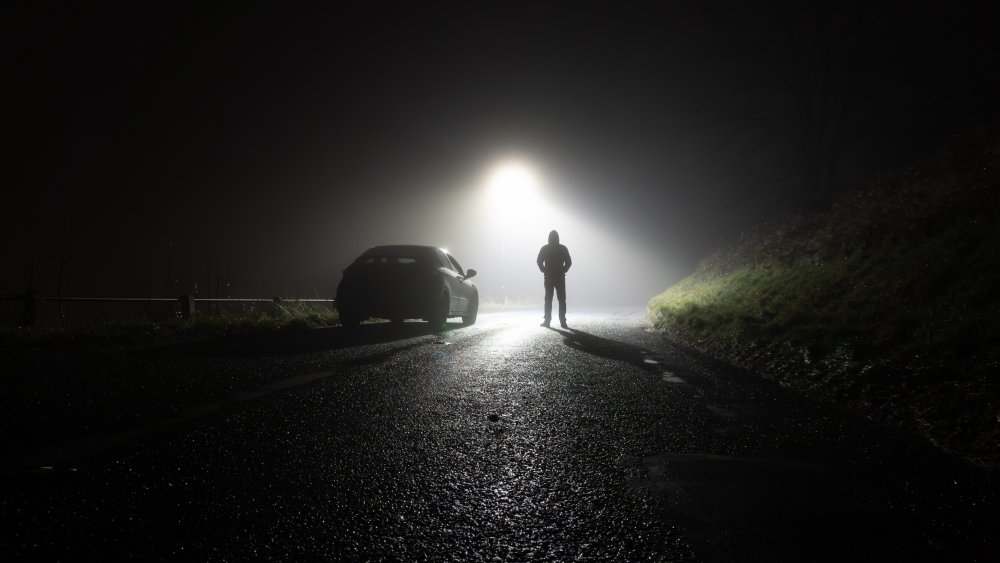The Truth About The Bloody Mary Legend
Anybody who has ever been to a slumber party has heard some version of the Bloody Mary urban legend. There are a lot of variations, but all involve turning off the lights, grabbing a candle or flashlight, staring into the dark abyss of the mirror, and attempting to invoke a malevolent spirit to emerge and mutilate you and your friends.
In an essay titled "Bloody Mary in the Mirror: A Ritual Reflection of Pre-Pubescent Anxiety" folklorist Alan Dundes collects a number of versions of the legend. Some people report the story having religious connotations, others say her name must be chanted a certain number of times, or just until her ghostly form appears. Often Bloody Mary is headless, sometimes she comes out of the mirror to scratch your face off, and in other versions she sucks you into the spirit realm. Spoiler alert: the only thing that will happen from chanting "Bloody Mary" into the mirror is you might get a little spooked. However, as with all urban legends if you look past the fantastical elements you'll often kind some kernels of truth.
The woman in the mirror
Various historic and mythical women have been identified as the specter in the mirror. Many people point to a witch named Mary Worth or Worthington (no relation to the comic of the same name), who is rumored to have lived anywhere from the days of the Salem witch trials, to the outskirts of Chicago in the 19th century. In Dundes' essay he references research done by folklorist Janet Langlois who documented versions of the story where the woman is called Mary Whales, who is often identified as the protagonist of another urban legend, wherein a driver picks up a young female hitchhiker on a stormy night, only for her to turn out to be a ghost.
Dundes notes that all the variations have things in common, such as a female ghost, an abundance of blood, and that the ritual is specified to be performed in a bathroom mirror. He presents the theory that the Bloody Mary ritual is a reflection of young women's anxieties about entering puberty. Whether that interpretation holds water or not, it is illustrative of how deep the roots of the legend go.

